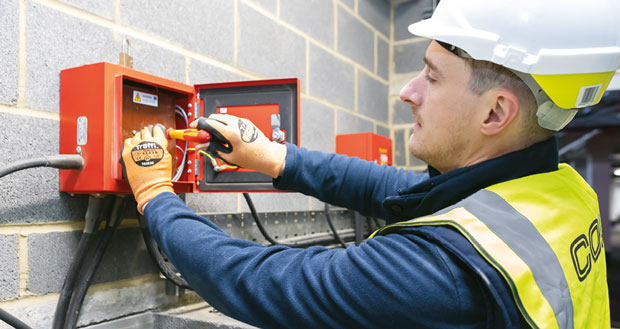 Conor Logan, Technical Director at Colt, on the hidden dangers of neglecting smoke control maintenance and why proactive servicing is essential
Conor Logan, Technical Director at Colt, on the hidden dangers of neglecting smoke control maintenance and why proactive servicing is essential
As a diligent facilities manager, your primary responsibility lies in ensuring the safety and wellbeing of the occupants within your buildings. Amid the multifaceted aspects of building safety, something that is often overlooked is the maintenance and repair of smoke control systems. Situated discreetly within walls and ductwork, these systems are frequently missed during routine inspections. Because of this, record-keeping can become patchy and some facilities and building managers might not even be aware of the systems within their buildings, inadvertently neglecting their maintenance duties for years.
Smoke ventilation systems can be found in a wide range of different building types and are most commonly found in multi-storey and large open-plan single-storey buildings, such as distribution centres or factories.
Neglecting their maintenance could lead to catastrophic consequences, as they are responsible for removing heat and smoke from a building during a fire and play a pivotal role in keeping escape routes for evacuees safe and clear of smoke. They also facilitate safer entry for firefighting services.
This article looks into the hidden dangers associated with neglecting repairs for smoke control systems and looks to explain why proactive maintenance is the best approach.
1. Compromised Life Safety
In a worst-case scenario, the negligence of smoke control system repairs could result in compromised safety for your building’s occupants. Smoke ventilation systems are a crucial part of a building’s fire safety as they manage smoke and toxic gases, provide occupants a safe evacuation route, and offer crucial time for firefighters to locate and put out the fire. A malfunctioning system could allow smoke to spread quickly, blocking exit routes and making escape difficult.
2. Legal and Regulatory Compliance
Within the UK, compliance with The Regulatory Reform (Fire Safety) Order 2005 (RRO) is imperative for building managers. This regulation mandates the “Responsible Person”, typically the building owner or manager, to maintain smoke control systems in efficient working order at all times. Ignoring repairs not only breaches these regulations but also entails legal repercussions and fines. Should a fire break out, insurance claims may also be jeopardised if negligence in system maintenance is established.
Furthermore, recent changes to the Building Safety Act add an extra level of responsibility – if a life safety system is found to be compromised for longer than 24 hours, the defect must be reported to the local Fire and Rescue Service and fixed as soon as possible.
3. Increased Property Damage
Beyond the jeopardy to life safety, malfunctioning smoke control systems can add to property damage during a fire. Smoke can harm building materials, equipment, and valuable assets, culminating in substantial financial losses. A well-maintained system, conversely, can curtail the fire’s reach, mitigating damage and preserving both lives and property.
4. System Degradation
Similar to any other mechanical system, smoke control systems undergo degradation over time due to wear and tear. Neglecting repairs expedites this process, resulting in frequent breakdowns and escalating long-term maintenance costs. Regular inspections and repairs can extend the system’s lifespan and ensure optimal functionality when emergencies arise.
5. Loss of Public Trust
Public trust is an invaluable asset in building management. Ignoring smoke control system repairs can erode this trust, instigating concerns among occupants and visitors about their safety. A reputation tarnished by inadequate safety measures can have far-reaching consequences, deterring potential tenants, visitors, and future business opportunities.
6. Increased Liability
In the unfortunate event of fire-related incidents, the failure to maintain smoke control systems heightens liability. Negligence in safety system maintenance invites costly lawsuits, potentially tarnishing the business or organisation’s reputation.
If you are not sure that your building’s smoke control systems have been maintained properly, contact Colt’s fire safety experts for a free building survey, recommendations and actions to ensure your systems are safe and compliant.
To help you understand your responsibilities, we have also created a ‘Smoke Control Maintenance Checklist’ which you can download via the QR code below. The guide outlines which maintenance actions need to be taken, when they need to be taken and by whom.






